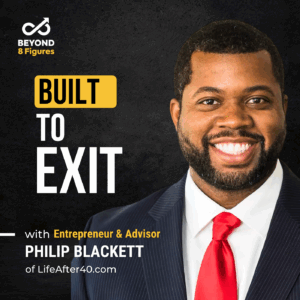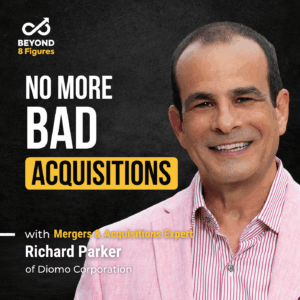You throw in some old school phone calls that don’t get logged anywhere and suddenly you can’t track what’s causing what to truly drive your results. This is frustrating because you have to guess where to invest your next marketing dollar or your own efforts. We all know this can lead to either wasting money and time, or underperforming channels, or overlooking a hidden gem that really is bringing in you great leads but you’re not paying enough attention to.
On top of that, a lot of founders talk about how they struggle to connect the dots between the money they spend and the actual revenue they generate. Especially if the product or service carries a high price tag, it gets hard to kind of figure out what that balance is. Often it’s because they rely too heavily on a last click conversion from a Google Ad, Facebook, or even an email campaign, and ignore the fact that a prospect might have seen them on LinkedIn, saw something on Twitter, and, you know, beginning their email forever in a day, and then clicked in an ad because oh yeah, this is the guy I trust.
If you don’t have the other aspects, a holistic view, it’s tough to decide where to scale and where to pare back. If you’re spending a lot of money but you aren’t sure if what’s actually bringing you the right customers, it’s flying blind. This issue of acquiring customers, if you’re selling a premium offer, you know how high these costs can get. It’s very expensive. But if they’re a premium customer and you’re in a competitive market, you know you’re getting pushed to pay a premium to get them. So if you’re not deeply optimizing your funnel, your profit margin can shrink pretty quickly. This leads to a real sense of is this even worth it? How do I justify scaling when I’m barely breaking even on each sale?
Then there’s just the good old sales funnel itself. High ticket purchases often involve multiple stages, research demos, stakeholder sign offs, trial period bids, multiple research touch points. If you’re not proactively walking leads through every step of the funnel and thinking about where they are, what’s going to help them, they can slip through the cracks. Sometimes your team is understaffed or you haven’t fully mapped out how to handle each milestone. That creates a lot of unpredictability in your revenue flow and can leave you guessing at which deals will close and when. I’ve lived this, believe me. Adding to this mix, you might find that you’re bringing in plenty of inquiries but you’re not handling them efficiently. A lead comes in through a form submission and maybe it sits for a couple of days before someone responds. Or that phone call that sounded so promising never gets properly logged into the CRM from your top salesperson. This is a huge area where many founders are literally burning money. It doesn’t matter how good your marketing is, the folks who reach out never hear back or hear back way too late.
If you’re like most growth focused business owners, you might be so wrapped up in chasing new leads that then you’ve forgotten about the customers you already have. Often there’s a huge opportunity to upsell, cross sell, or even just ask for referrals, but we let that slip because it’s not as exciting as chasing the next big sale or we assume people will come back on their own. The reality is when you ignore existing clients, you lose out on some of the easiest revenue possible. Believe me, I learned long ago that being a farmer is way more productive than being a hunter. You have to learn to hunt. But farming is the best way to develop consistent, predictable revenue. But let’s get to that later.
The other piece that ties this all together is what happens when you, the founder, is still the linchpin for every critical decision. Really, I always fall into this trap. Many of us have built our businesses from the ground up so it’s natural to want to have a hand in everything. But if every lead has to be personally connected to you or every marketing shift has to go through you, you’re going to be the bottleneck. You’ll hit a point where you can’t physically keep up and the business cannot scale further. That leads to burnout or stagnant growth. Neither is where you want to be now.
When you look at these issues, disorganized data, unclear ROI, high cost of customer acquisition, leaky funnels, neglected retention strategies, and founder bottleneck, you can see how they each fuel the next segment. If you’re scrambling to solve everything at once, it feels like a never ending game of whack a mole. But the good news is each of these is fixable with the right systems and processes. Might be as simple as unifying your reporting tools, improving follow up time, building referral mechanisms, or delegating parts of the sales process. You don’t have to tackle them all at once. You can pick your biggest pain point, maybe your lead handling is chaotic, and focus on that first. Remember, it’s all about directionally correct, incremental progress. That’s it. Or if you want to make it easier, just put one foot in front of the other and soon you’ll be walking out the door.
Before I kind of wrap this up, today is just a really short episode. I want to switch gears for a moment and give you a brief update on something I’ve been experimenting with and have discussed on previous episode—my ongoing use of Sens.ai meditation device. If you caught the previous episode, you know I’ve been trying to do one to two sessions a day, each around 15 to 30 minutes to see if I can sharpen my focus and reduce some of the mental clutter that builds up when you’re juggling all of your business growth, marketing, sales, all these challenges we have in trying to grow our business. I’ve been pretty consistent over the past few weeks. Generally one and a half sessions per day. We’ll go with that. And I’m finding that the real time feedback of Sens.ai is really cool. They have an audio cue that fades in and out as your mind drifts. So if you’re losing focus, if you’re not in the moment, it suddenly gets very, very quiet. And when you bring your focus back to the sound, it gets louder. I find myself having these moments where I’m very much in it and then I’m thinking so much I’m in it that all of a sudden I’m lost my time of being in the present and it gets deadly quiet. So I’m using that to help snap me back to the present. It’s a little like having a coach gently say hey, come back every time you your thoughts wander. I’ve noticed I’m getting a little less prone to jumping around in my head during the day if I remember to one do the session first thing in the morning. And then two to think about this process as I’m jumping around now, I know that’s a little bit, you know, when you’re distracted, to remind yourself about what happens when you’re distracted is a little difficult. But just knowing that, oh, wait, I’m distracted. Where am I focused? Where am I trying to focus? Brings a little bit more clarity to my process. And I’ve been trying to test some things out.
It’s not an overnight magic trick but it’s definitely giving me a nudge to greater clarity. I expect it’s going to take a while and I’m trying to figure out if there’s better ways to actually track how effective it is in helping me on my own entrepreneurial journey. I’ve been trying to use it when I’m trying to go through a deep report, I’m looking at an acquisition target or I’m working with one of my clients and I’m going through their data. I try and just use that feedback as I’m like, oh, what should I do for dinner? What should, oh, the noise is getting really low. How can I focus back here? It’s helping but like I said, it’s not natural yet.
And I think this is what a little more time and a little bit more of using it will bring me. This has just been a brief update. A couple of you have, either on Twitter or elsewhere, have asked how the experiment’s going. So I’ll continue to keep you posted as I gather more data. I have a couple of their own feedback loops to go through. They have kind of a regular testing cycle to check your response time. And I’ve also been using AI to evaluate my conversation, you know, transcripts of my conversations with prospects or discussion acquisitions or some of my clients. So what I do sometimes is use it, especially after I’ve had a session with Sens.ai, ahead of time. I’ll then kind of track how effective I was.
One small thing I’ve liked is when I have a conversation right after using Sens.ai, my use of ums, uhs and ahs and you knows, you know, filler words drop by 70%. That alone is worth 15 minute prep time before every call. But it’s just one little thing I’m noticing so far with the transcript AI analysis. So if you’re curious, you can go check out Sens.ai or poke around other neurofeedback tools. I discuss ways to create your own in the last one and we’ll continue touching on that in future episodes. Anything that’s going to resonate with you. Because remember, when it comes to meditation, while there are deep angles you can go into and kind of get to the greatest, you know, the 80/20 is just daily consistent effort. Don’t worry about becoming a guru. Don’t worry about utilizing everything. Just find a daily consistent practice that’s going to get you 80% of the benefits for just 20% of the effort. Use it to handle your stress and maintain clarity. That will make everything else a lot easier. So no matter what method you choose, just get started.
All right, that’s all I have for today. If you find yourself nodding along with these marketing and sales pain points, don’t just push them aside. Take a moment to figure out which one is costing you the most, either lost revenue or lost peace of mind, and start chipping away at it with a practical solution. If you need any help, you know I’m here. You can reach out. I work with clients on this all the time, but just book a time just to chat quickly and get some feedback. I’m not trying to hard sell anything. Yes, I do work with clients on this but if you just want some quick feedback, book 45 minutes and let’s chat. This is fun for me, really, and I would love to help you.
So look, if you want my help, I’m always available. Have the consulting, I have my team, we can do all sorts of things. Or I’m just here to chat with you on what’s going to help you. Just reach out if you need it. Otherwise, keep working on your personal toolkit. Maintain focus, whether that’s meditation, exercise or something else that helps you stay grounded. So thank you for tuning in as always. I’m A.J. and you’ve been listening to Beyond 8 Figures. Thank you and we’ll talk again soon. Bye-bye.

 The challenge of fragmented marketing data across multiple platforms
The challenge of fragmented marketing data across multiple platforms High customer acquisition costs in premium markets
High customer acquisition costs in premium markets The importance of proper lead management and follow-up
The importance of proper lead management and follow-up Breaking free from the founder bottleneck
Breaking free from the founder bottleneck Implementing practical solutions for sustainable growth
Implementing practical solutions for sustainable growth Sens.ai Meditation Device Experiment – Update
Sens.ai Meditation Device Experiment – Update




